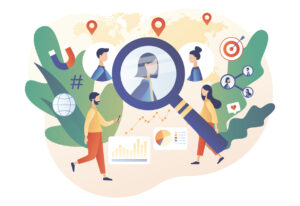How to improve employee engagement
Tap into technology like Yammer to reach a remote workforce.

At the start of the pandemic, communicators were thrust into a crash course on how to engage a remote workforce. Some were more prepared than others.
“Some organizations were ready in adopting new technology when employees were sent to work from home because of the shelter-in-place orders,” explains Angus Florance, product marketing manager for Microsoft’s Yammer. “Others became busy trying to make existing solutions work. And some had to start from scratch. Regardless, the technology changes have had to move very quickly without having had much time think about employee engagement.”
The engagement challenges for communications are many—recruiting, employee onboarding, shipping and receiving, and customer engagement on top of stressors from COVID-19 (mental, physical, emotional), Florance says.To combat those challenges, he encourages communicators to “keep an open mind and keep trying.”
Employees might be open to trying something new. “If you tried a campaign a few years ago, and it did not pan out with the results you thought it should, try again. Start small and experiment with specific groups, projects, teams, opportunities, or events.”
He also suggests finding leaders willing to learn and use technology.
“Find a few leaders who are willing to use technology to further their goals, objectives, programs, and initiatives, amplifying their messages even more,” he says. “Coach leaders on how they can better use technology to amplify their own messages as well as to tune into the broader conversations.”
As always, use data to help drive your decisions.
“Use data to show where the organization is well connected and where the opportunity exists to be more connected,” he says. “You can use this data as areas to focus your efforts on building bridges for community and conversations.”
Another powerful way to improve engagement and enhance communication is storytelling.
“Stories help employees understand the impact of the work they are doing, beyond the numbers, analytics or budgets,” he says. “Stories allow employees to gain a sense of empathy, particularly though a variety of mediums like videos, events, photos. When you use rich media to help tell your story, you can relate across generations, time zones and cultures,” he says.
Yammer customers use stories to share how their organizational values and objectives come to life.
“Customers are using specific hashtags or topics, and share videos or pictures when they are seeing their values being lived out,” he says.
Mobile video sharing, he says, allows employees to share their firsthand experiences.
“Whether employees are on the shop floor, or the executive has just finished speaking with customers, quick, short videos give others the ability to hear directly from the sources, the ones closest to the source.”
Digital collaboration has never been more important than it is now. Communicators have turned to technology like Yammer to help engage employees.
“Yammer helps builds a sense of community, across time zones and geographies or departments,” Florance says. “The natural communication style in Yammer allows for you to reply when it is beneficial to you and workload and schedule. You reply and engage when you have time.”
“Yammer provides a space for self-service and peer to peer communities to help answer frequently asked questions. Additionally, new hires can ask questions to employees beyond their direct teams and ask experts for advice. “
Learn more about how Yammer’s new features and how it can improve internal communication and enhance storytelling at Ragan’s Remote Employee Engagement & Culture Virtual Conference on July 21.
This article is in partnership with Yammer.







